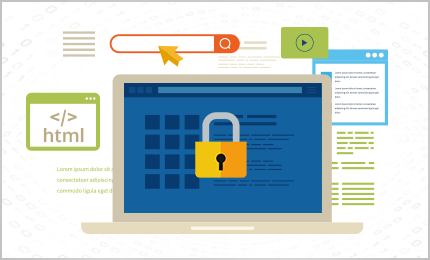Web application security refers to the process of protecting websites and online services against a variety of security threats that exploit vulnerabilities in an application’s code. Web application attacks often target content management systems, SaaS applications, and database administration tools.
Web applications are considered to be high-priority targets by perpetrators due to:
- The inherent complexity of their source code, which increases the likelihood of malicious code manipulation and unattended vulnerabilities.
- High-value rewards, including personal data collected from successful source code manipulation.
- Effortless execution as it is possible to easily automate and launch most attacks against even hundreds of thousands of targets at a time.
- Organizations failing to protect their web applications run the risk of being attacked. This can indeed result in damaged client relationships, revoked licenses, information theft, and legal proceedings.

There are a number of negative consequences that web application-based attacks can bring to companies. Some of these include:
- Theft of sensitive data
- Negative perception of the brand
- Distrust on the part of customers
- Significant financial losses
Practices that Guarantee the Security of Web Applications
Employing the following practices will help in protecting your web applications:
-
Protect sensitive data
Implementing SSL encryption is a significant strategy when protecting applications handling sensitive data. You can also protect information by configuring your web server to automatically redirect all HTTP requests to encrypted pages. This will help in preventing session IDs or passwords from being transmitted clearly.
-
Perform a risk assessment
The identification of security requirements is vital when developing effective protocols. You will have to assess all those factors most likely to influence the security of web applications. Following the identification process, it is wise to prioritize the factors of greatest impact in order to establish the most ideal strategies.
-
Develop a secure password reset system
Password reset systems are generally based on personal questions. If this is the case with your web application, it is the best to set up a system in which the questions are tough to guess. When developing this system, ensure that the reset option does not disclose whether an account is valid or not, thus helping to prevent the enumeration of usernames.
-
Establish strategies against harmful user input
Believing that user entries are secure is a blunder as it prevents the execution of necessary precautions, allowing malicious users to effortlessly send harmful information to your application. Applying the following rules will help in protecting the app from harmful entries:
- Refrain from storing unfiltered user entries in a database.
- In order to accept HTML from a user, filter it manually.
- Try not to store confidential information in a location that is accessible from the browser.
- Encode HTML to convert the potentially harmful script into display strings before displaying unreliable information.
-
Use a web application security tool
Always understand that manual processes can be tedious and long, and there are security breaches that can actually escape human eyes. This is the reason why it is highly recommended for you to automate the detection of vulnerabilities of your web applications through a tool.
You may come across a number of solutions capable of executing this task, but if you really want one whole comprehensive solution then go in for cWatch – a Managed Security Service for web applications and websites. cWatch, developed by Comodo, offers you the following web security features:
-
DDoS Protection
his improves traffic on your website and blocks hackers from using software vulnerabilities.
-
Bot Protection
Tracks legit website users to be protected from annoying delayed pages or CAPTCHA.
-
Daily Malware and Vulnerability Scan
Assurance that a daily report will be sent to monitor website safety.
-
Website Acceleration
This permits your website to perform faster than before.
-
Full Blacklist Removal
When the website scanning is done, all the blacklists will be removed to your website.
-
Real Content Delivery Network
Delivers web content faster by caching at a global data center to shorten distances, provide website security, and meet traffic spikes.
-
Website Hack Repair
With the help of website malware removal, website hack repair provides an in-depth report on areas you need to deal with.
-
Instant Malware Removal
Permits you to know the exact malware that keeps attacking your website.
-
Managed Web Application Firewall
Operates at all web servers and acts as a customer inspection point to detect and filter out content like embedded malicious website code.
-
SIEM Threat Detection
Advanced intelligence that can leverage current events and data from 85M+ endpoints and 100M+ domains.
-
24/7 Cyber Security Operation
Certified experts using advanced technology to resolve security incidents at a faster rate.
Related Resources





